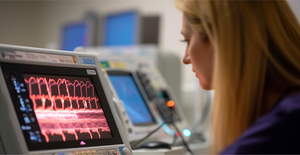Diabetes Testing
Screening for diabetes and taking steps to improve your blood sugar if you’re found to have elevated levels can go a long way in helping you stay healthy today and long into the future.
Types of Diabetes Testing
What is diabetes?
You’ve likely heard of the chronic condition known as diabetes or diabetes mellitus. What you may not be aware of is that diabetes and its precursor, prediabetes, can happen to anyone of any age. In fact, according to the U.S. Centers for Disease Control and Prevention (CDC), 38% of U.S. adults over age 18 have prediabetes, and research in the Journal of the American Medical Association (JAMA) notes that 18% of adolescents also have this condition. There are two types of diabetes: Type 1 diabetes and Type 2 diabetes.
Type 1 diabetes
Type 1 diabete – also known as insulin-dependent diabetes – which typically develops in childhood, was formerly known as juvenile-onset diabetes. This type of diabetes requires insulin administration. According to the CDC, routine screening for type 1 diabetes is typically not advised because there is now no evidence that measures can stop or delay the onset of the disease.
Type 2 diabetes
According to the CDC, the most prevalent kind of diabetes is type 2. In the early stages, symptoms frequently do not manifest. This means that it can take years for a diagnosis to be made. Chronic hyperglycemia is a danger for people with type 2 diabetes who do not know they have it. It is a disorder that causes long-term harm to the heart, blood vessels, kidneys, nerves, eyes, and kidneys. Additionally, those with diabetes are more likely to have excessive blood pressure, abnormal cholesterol, and obesity.
The CDC notes that people can avoid the most serious effects of type 2 diabetes by getting tested early. Long term complications can be managed with medical care, weight management, nutrition, and exercise.
What is diabetes testing?
Healthcare providers conduct diabetes testing in many ways. Diabetes tests can help identify if your blood sugar is in a prediabetic or diabetic range, and they can also help you track your condition if you have already been diagnosed with diabetes. Two of the most common ways to screen for diabetes include a fasting blood glucose test and a hemoglobin A1C test.
Fasting blood glucose test
A fasting blood glucose test helps a healthcare provider assess the amount of glucose in your blood at a specific moment in time. Glucose is the sugar molecule that all of the cells in your body use for fuel. Glucose is moved into your cells with the help of a hormone known as insulin. When you have diabetes, your cells may be less sensitive to the effects of insulin, or your body may not produce insulin at all. This means that the level of glucose in your bloodstream remains elevated above a normal range. A fasting blood glucose test checks for the level of sugar in your blood using a finger prick or blood draw. Based on the results, a healthcare provider can decide if you are at risk for diabetes.
Hemoglobin AIC test
A hemoglobin AIC test, also known as an A1C test or HbA1c test, is a blood test that provides an average blood sugar level over the past three months. When glucose is traveling through your blood, it occasionally sticks to the proteins on red blood cells known as hemoglobins. These hemoglobins will become coated in glucose in direct proportion to how much glucose is in your bloodstream. The lifecycle of a red blood cell is about three months, so measuring the percentage of your hemoglobin molecules that are coated with glucose can give an estimate of your average blood sugar over the past three months. Based on your A1C results, a healthcare provider can place you in a “normal,” “prediabetic,” or “diabetic” range.
According to the National Library of Medicine, two other methods can also be used for diabetic testing; however, they are less commonly used for general screening:
- One test is known as a random blood glucose test, and it is a simple blood draw that checks your blood glucose level independent of whether or not you are fasting. This can help your healthcare provider diagnose you with diabetes if you’re having symptoms of high blood sugar, but it is less useful for determining whether you fall into a prediabetic range.
- A second test, known as an oral glucose tolerance test (OGTT), checks your blood sugar after you have consumed a high load of glucose within a medical setting. According to the NLMthis type of test is more frequently used for screening for gestational diabetes in pregnant females.
Regardless of the method used for diabetes testing, if your test shows that you are in a prediabetic or diabetic range, your healthcare provider can make several recommendations about how to manage your condition and improve your blood sugar numbers.
Who should get a diabetes test?
If you’re interested in getting tested for diabetes, then you are already on the right track when it comes to taking care of your health. Beyond general interest and a desire to get screened, certain groups of people should get tested for diabetes, according to the CDC. These include:
- People who are having symptoms of high or low blood sugar, including excessive thirst or hunger, wounds that don’t heal well, fatigue, unintentional weight loss, blurred vision, numbness or tingling in the extremities, dizziness, irritability, confusion, anxiety, sweating, or shaking.
- People who are older than age 45 as a universal screening. If your test is normal at age 45, then you can wait three years until you get retested.
- People who have had a diabetes test in the past that showed prediabetes or diabetes.
- People who have risk factors for diabetes, such as excessive body weight, a family history of diabetes, high blood pressure, a sedentary lifestyle, heart disease, or a history of gestational diabetes.
A healthcare provider may recommend a diabetes test for other reasons, as well, including if you are taking certain medications that predispose you to develop this condition.
How to get a diabetes test
There are many ways to get a diabetes test. Some tests, such as a blood glucose test, are available over the counter for at-home use. However, if you are concerned that you may have diabetes, it may be best to visit a healthcare provider for a full assessment. Within that encounter, your provider can order a diabetes test if he or she believes you meet the criteria for testing. After the test is completed, your healthcare provider can help you interpret your results and provide counseling and recommendations based on your individual health status.
What to expect during a diabetes test
During a diabetes test, you may be asked to fast in advance. However, if you’re anticipating a hemoglobin A1C test or random blood glucose test, fasting is not necessary. Make sure to ask your healthcare provider if your results will be affected by food. There is nothing else that you need to do to prepare for the test. If you are receiving a finger prick test, your provider will clean the tip of your finger and then use a lancet to quickly pierce your skin and use a drop of blood on a testing strip to immediately know your blood glucose level. If your provider is screening for diabetes with a blood draw, a small needle will be used to pierce your skin (likely in the crook of your arm) and withdraw a small amount of blood. You may know your results that same day or within the next few days, depending on where tests are processed.
Interpreting the results of a diabetes test
Ask your healthcare provider for assistance in interpreting your diabetes test. Specific guidelines are used for any given test to determine if you are in a normal, prediabetic, or diabetic range.
According to the CDC, for an A1C test, the following ranges are considered standard:
- Normal A1C range: Less than 5.7%
- Prediabetic A1C range: Between 5.7 and 6.4%
- Diabetic A1C range: 6.5% or greater
According to the CDC, for a fasting blood sugar test, the following ranges are considered standard:
- Normal: 99 mg/dL of glucose or below
- Prediabetes: 100 to 125 mg/dL of glucose
- Diabetes: 126 mg/dL or above
Both of these diabetic tests can be used to make an initial diagnosis of prediabetes or diabetes. Other specific circumstances can affect your diabetic test results,so check in with your healthcare provider about how to best interpret your test results.
What to do if a diabetes test shows elevated blood sugar
If your diabetes test is abnormal, it is very important to have a follow-up conversation with your healthcare provider. A healthcare provider can give you more information about prediabetes and diabetes, including what you can do to lower your blood glucose levels and make sure that they’re not affecting your health over the long term. You can make lifestyle changes and take medications that can help improve your diabetes test results in the future.
Find Diabetes Testing near you
- Alabama
- Alaska
- Arizona
- Arkansas
- California
- Colorado
- Connecticut
- Delaware
- Florida
- Georgia
- Hawaii
- Idaho
- Illinois
- Indiana
- Iowa
- Kansas
- Kentucky
- Louisiana
- Maine
- Maryland
- Massachusetts
- Michigan
- Minnesota
- Mississippi
- Missouri
- Montana
- Nebraska
- Nevada
- New Hampshire
- New Jersey
- New Mexico
- New York
- North Carolina
- North Dakota
- Ohio
- Oklahoma
- Oregon
- Pennsylvania
- Rhode Island
- South Carolina
- South Dakota
- Tennessee
- Texas
- Utah
- Vermont
- Virginia
- Washington
- Washington DC
- West Virginia
- Wisconsin
- Wyoming
Diabetes Testing FAQs
What is a diabetes test looking for?
A diabetes test looks for information about the amount of glucose in your blood, otherwise known as your blood sugar. An A1C test looks for the average blood sugar level over the past three months, and a blood glucose test looks for your blood glucose level at a specific moment.
Does elevated blood sugar mean I have diabetes?
Yes, it can. If you have elevated blood sugar, you may have prediabetes or diabetes. Healthcare providers use established ranges for blood glucose tests and A1C tests to make an initial diagnosis of diabetes. These tests can also help monitor your progress if you are given the diagnosis of diabetes.
What kind of diabetes do I have if my diabetes test is elevated?
If you have Type 1 diabetes, Type 2 diabetes, or gestational diabetes, you may have elevated blood glucose or A1C. However, screening tests for diabetes cannot distinguish between different types of diabetes. Your healthcare provider can help you determine your diabetes type based on history, physical exam, and other tests.
Where can I get a diabetes test?
At Solv, we’re on a mission to help you find nearby, convenient care that fits your schedule and lifestyle. Our urgent care and lab testing partners are all well prepared to screen you for conditions like diabetes using diabetes tests.
How can I lower my diabetes test?
According to the American Diabetes Association (ADA), a good way to lower your blood glucose, and therefore an A1C or fasting blood glucose test, is to exercise. Exercise encourages cells to uptake more sugar molecules from the bloodstream to use them as fuel, driving down average blood sugar levels.
Are there risks of getting a diabetes test?
Yes, however, the risks are very small, according to the ADA. A lancet or needle used during a diabetes test can cause slight bruising or bleeding. Rarely, there is a chance of infection—however, this is not common. Overall, the risks of getting a diabetes test are very low.
Solv has strict sourcing guidelines and relies on peer-reviewed studies, academic research institutions, and medical associations. We avoid using tertiary references.
Everyday Healthcare, Simplified
Expert advice to help you live your best life

 LinkedIn
LinkedIn



